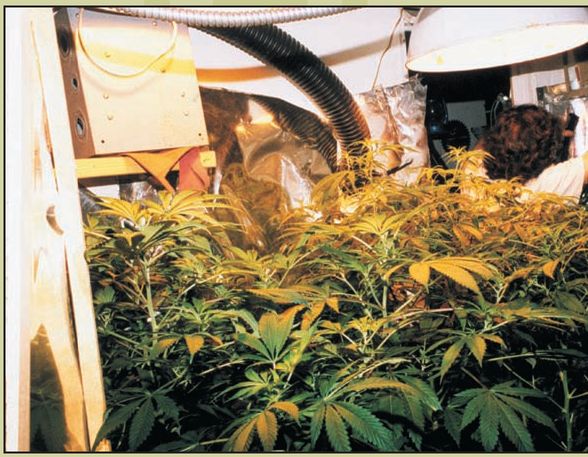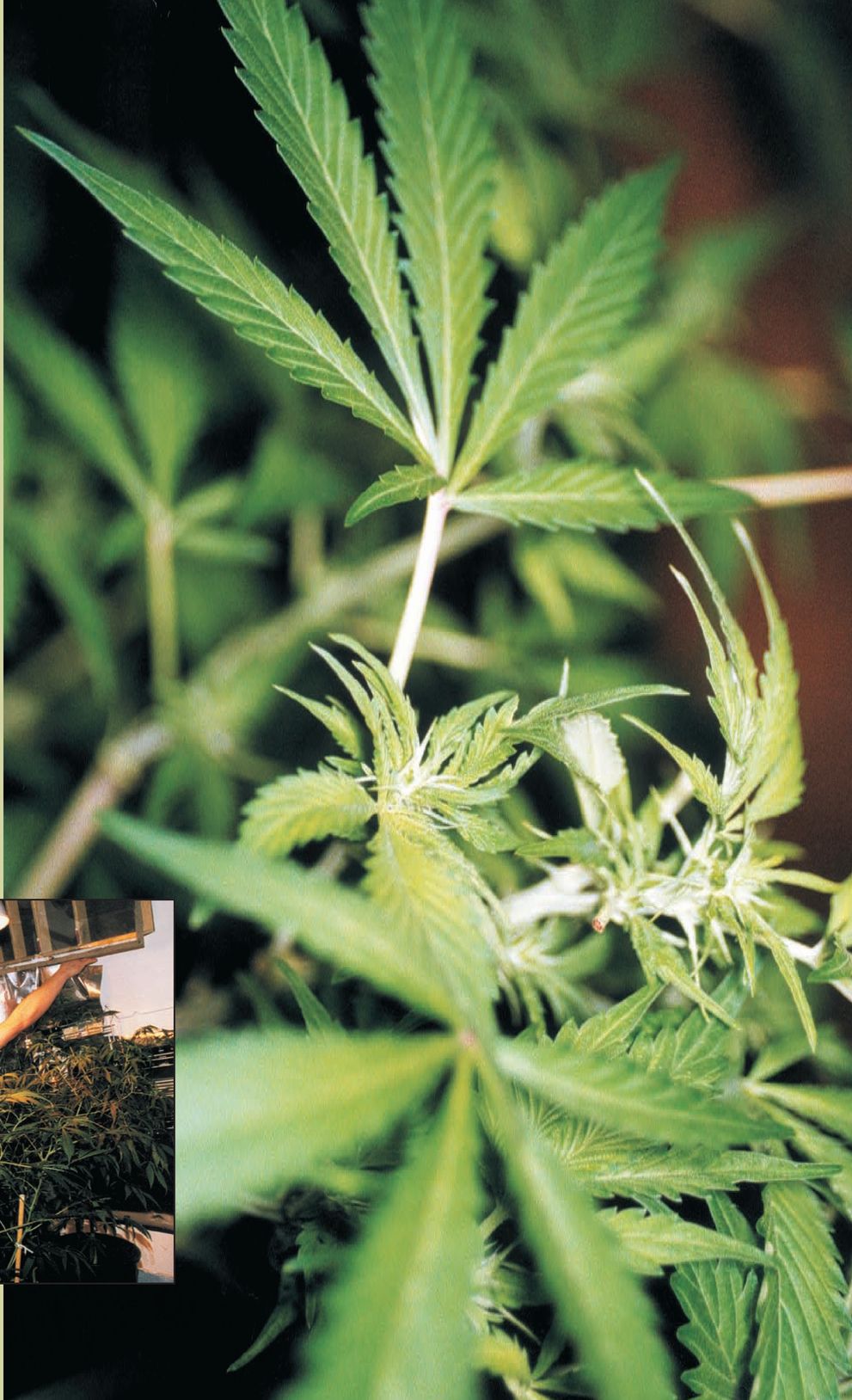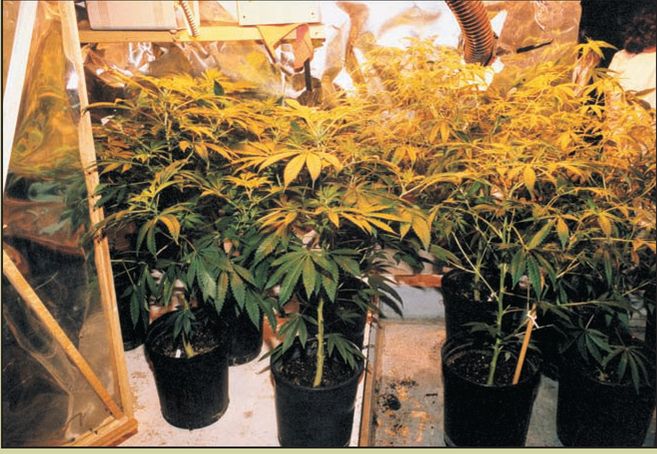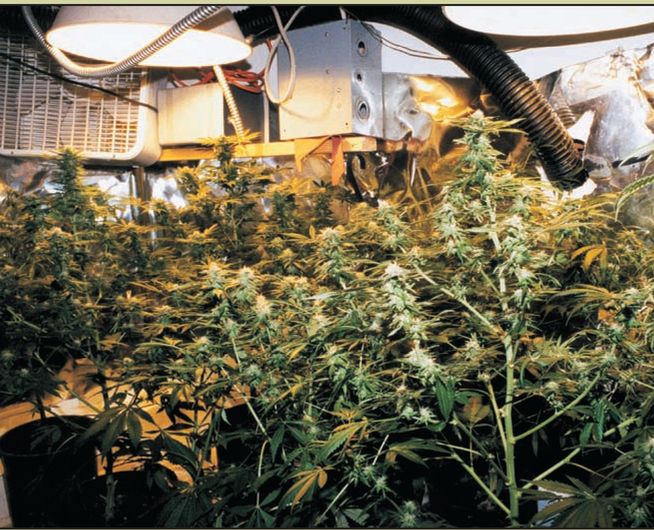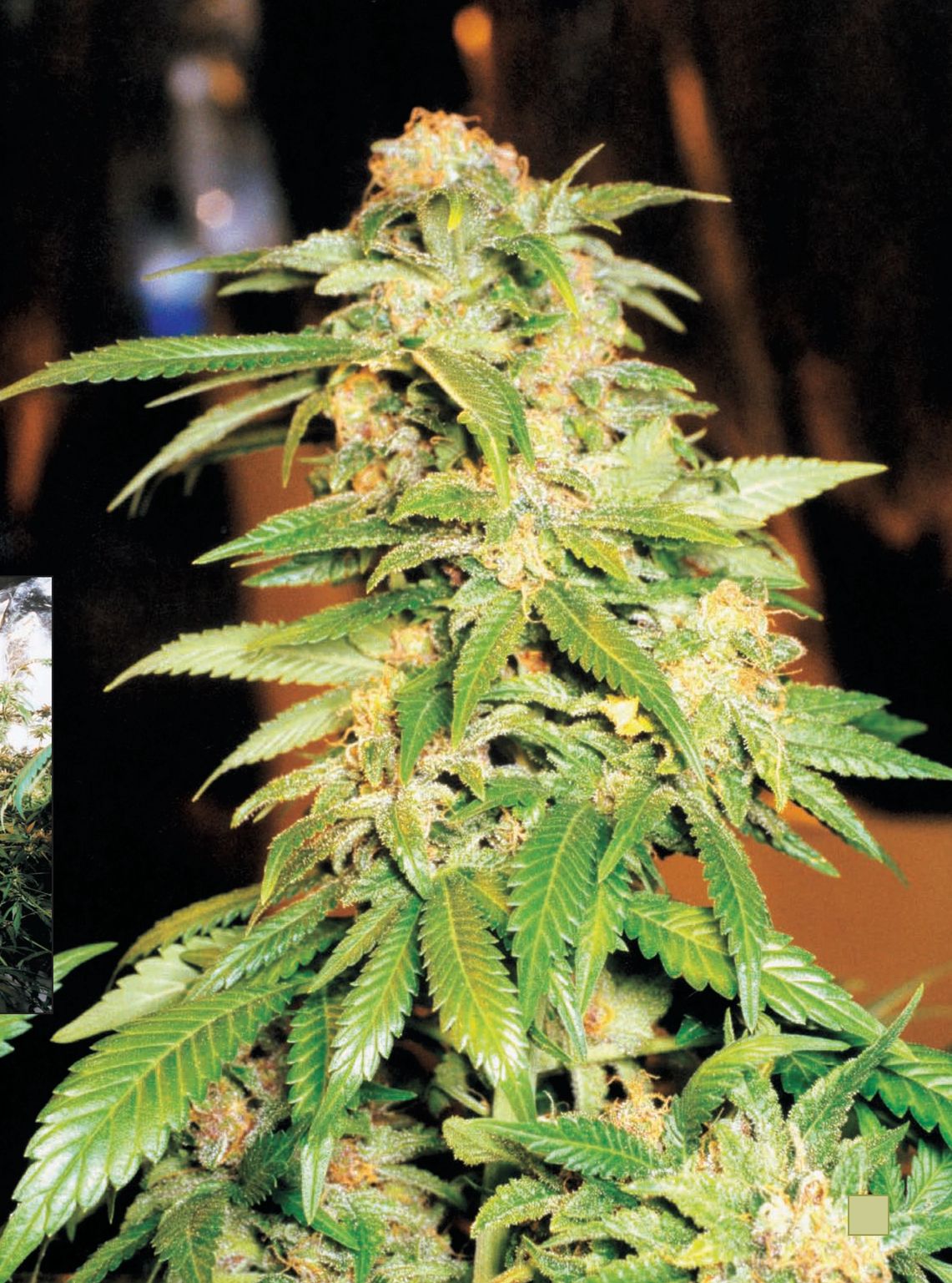Easy Organics
Indoor gardeners can either grow hydroponically or use a planting mix. Hydroponic gardeners use media such as rockwool, coir (coconut husk) or clay pellets, all of which are virtually nutrientfree, and then add nutrients by using water-soluble fertilizers. Planting mixes are often made up of nutrient-rich ingredients.
Each growing method has its advantages and disadvantages. Hydroponics offers easier planting, faster growth, higher yields and automated care. The advantages of hydroponics become more apparent in large systems, where handwork can be very time-consuming. In smaller gardens, where hand watering takes only a few minutes, automated systems may not save much time; however, they remove the need to be continuously available to water the plants. The other advantage of hydroponics - higher yield - is alluring for the ganja-growing hobbyist. Hydroponic gardens can be finicky but the hydroponic system is like a Porsche, when it is fine-tuned it works very well. Planting mediums are more like a Toyota sedan – very reliable. They are more forgiving because the ingredients and the microorganisms they host buffer extreme conditions. They are also generally easier to get started than hydroponic gardens.
Planting Mediums
Planting mix gardens are the way to go for growers who do not wish to become garden experts, but would like to grow an ample harvest of good bud. They are easy to set up and do not require a large investment of time or money. If seeds are being used, each should be planted in a single 2- to 4-inch container with planting mix as described below. The seeds are planted about one-half inch below the soil line and kept moist. This can be done by placing the containers in a covered bowl or covering them with plastic wrap. The seeds usually germinate within ten days, but sometimes take only two or three days. Once germinated, the seeds should be watered every two to three days, when the soil surface begins to feel more dry than wet.
After a few weeks of growth it is time to sex the seedlings – unless you are starting with clones, which have already been sexed. Instead of sexing whole plants, which slows their growth, clip a branch from each one and mark it. The cuttings will indicate their sex by growing flowers in a week to ten days. The plant from which it came will have the same sex as the cutting.
Keep the cuttings in a jar with water and dilute water/nutrient mix. For nutrient mix, add a balanced houseplant fertilizer at one-half the recommended rate. Change the water/nutrient solution every other day. Place the cuttings under a daily regimen of 10 hours of light and 14 hours of uninterrupted darkness. The dark period is easily accomplished by moving the jar into a closet or dark cabinet each day after the plants get ten hours of light.
Within 7-10 days of forcing, the plants will begin to grow flowers, indicating their sex. Clone mothers will be the same sex as their clones. Remove and destroy the male plants – they are not moving to stage two.
Sexed seedlings and rooted clones are ready for the second stage. In this garden, 12-inch diameter containers, which hold about 2 1/2 - 3 gallons of mix, were filled with MJR planting mix, a high-quality planting medium recommended for houseplants. Other soils can be used, but should be labelled “enriched.” Generally, the more expensive mixes have better ingredients and more nutrients such as earthworm castings, compost, plant or fish meals, kelp and minerals such as rock phosphate. Enriched mixes need no fertilizers until forcing flowering, about a month after planting. Then, a high-phosphorous guano, such as 3-10-1 or 3-8-1 is added to the water at a rate of one-half tablespoon of fertilizer per gallon (5 ounces of each per 30 gallons) with each watering. The guanos are not entirely soluble, but will dissolve in water and even more so in boiling water. When the nutrients are dissolved in the solution, they reach the root zone faster so they can be absorbed more easily.
The trial garden was located in a 10’ x 10’ x 8’ room built in a basement. The door led to an aisle flanked by 4’ x 8’ trays on either side. These trays were built from wood coated with epoxy for water resistance. Only one of the trays was used this time. This tray rested on several stacks of industrial pallets, about 30 inches above the floor. Rather than using coated wood trays, you will probably find it more convenient to use commercial 4’ x 8’ plastic trays because they don’t require construction and are not likely to spring leaks.
The tray had a drainage hole on one side. To insure proper drainage, it was installed at a slant with a ratio of 1 to 40. Over the 8-foot length, there was a 2-inch slant. Twelve 12-inch standard flowerpots, which hold 3 gallons of medium, were spaced evenly on the tray. Two 400-watt lamps – a high pressure sodium and a metal halide – in old-style vertical reflectors illuminated the garden.
Thick Mylar sheets, purchased for pennies apiece at a flea market, were staple-gunned to the walls on three sides. On the fourth side, shutters (also cheap at the flea market because of broken slats) covered with Mylar could be extended for reflectivity or closed for easy access to the garden.
In smaller gardens, where hand watering takes only a few minutes, automated systems may not save much time; however, they remove the need to be continuously available to water the plants.
This garden was already growing for three weeks when the Captain staple-gunned the Mylar sheets to the wall. The garden was lit using two 1000-watt HPS lamps installed in old-style vertical reflectors.
The top of a Jack plant three weeks after forcing flowering. It has begun to grow stigmas in the last few days. The Jack can be a slowly maturing plant because its heritage, in part, is tropical sativa.
Two 20-inch window fans were hung from the ceiling at either end of the grow space. They were on constantly to circulate the air. A 50-pound CO2 tank was opened for about 30 seconds several times a day. This occurred whenever the garden’s owner, the former First Mate, now Captain, happened by when the lights were on.
The Captain was not planning to grow at all and this garden was unexpected. He tells it best: “I hadn’t thought about starting this garden until a friend came over with a Christmas present of cute little clones and five bags of ‘special’ soil. The clones included Jack Herer, White Rhino, White Widow, Bob Marley, X-10 and Skunk #1.
“I generally discourage my friends from bringing live presents. But these rooted clones were so cute and very special, and they smelled good too, unlike a puppy, which is likely to smell poopy and entails a longer commitment. I decided to take in these 24 orphans and give them a good home for a season.
“The 24 plants seemed like a lot for such a small space, so I gave a friend 12 plants for his barelooking empty space. He had helped me with my garden in the past, and we often share herb together. I kept some Bob Marleys, the Jacks and the White Rhinos, and gave my buddy the other plants.
“The gift included several bags of soil that the giver had read about and had tried, called MJR. He said he found it to be the easiest system he had ever used. I took the clones, potted them in the soil mix and watered them. It was almost a week before they needed water again. I let the plants grow vegetatively under continuous light for six weeks, when they averaged about 18 inches tall.
“Then I pruned them and set the timer to 12 hours of light and 12 hours of darkness, and began using one cup of 3-8-1 bat guano in a 30-gallon reservoir. Each time I watered, the plants got about a half-gallon. I watered each container until water drained from it.
“Actually, although I was advised to start fertilizing at forcing flowering, I didn’t start for the first 25 days of flowering. The plants were watered with this every four to six days, freeing up long weekends.
“Seventy-five days after forcing, the plants were ripe. The Jacks and White Rhinos formed tight buds ranging from medium to large. They each had excellent distinctive odors, tastes and highs; I found that I used the Jacks during the day and the White Rhinos at night. The Bob Marleys were tall, gangly plants with loose buds that never matured properly. I gave most of that pot away. The garden yielded a little less than a pound.
“After tasting the Skunks and X-10’s my friend grew, I decided to try some of them in my next grow room, since they both have great flavor and highs, too.”

A Jack plant at eight weeks. The buds are forming along a classical open pattern on the untrimmed plant. A fan above the garden circulates the air. The ducting, attached to a fan outside the space, drew hot air from the highest corner, where it pooled. Cool air was drawn in from the frequently open door or the numerous openings in the walls.
These plants were grown in 12-inch containers. They were placed on a 4’ x 8’ table with 5-inch sides. A moveable accordion shutter was attached to the wall with hinges. It could be moved from reflective mode when the garden was serviced. The shutter was used to keep light in the aisle side of the garden.
Ripe White Rhino. The dusty appearance is a layer of frosted glands covering the entire surface of the bud. The variety was cut between 10 1/2 and 11 weeks after forcing flowering.



